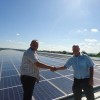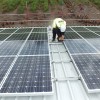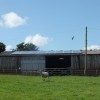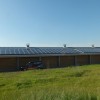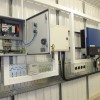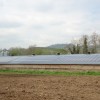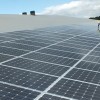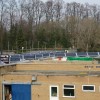Degradation of Modules
As things get older they tend to not to work as well and thus become less efficient. So it is for Solar PV Modules. Manufacturers scientifically test their Modules for degradation by attempting to accelerate the aging process. This also helps to set the parameters of Module Warranties. We know that for most branded Modules a degradation of more than 20% of the stated output performance over a 25 year term usually triggers a claim. It therefore seems likely that the real level of degradation will be somewhat less than 20%, as the manufactures will have doubtlessly left a substantial safety margin.
There are several causes of degradation of output performance. Some of the micro electronic circuitry might fail; the anti-reflective coating might de¬grade, so the amount of light entering the cells diminishes; the silicone may acquire impurities – for example, some of the Boron ‘Doping’ atoms within the ‘P’ Type Layer Silicon may become exposed to oxygen and oxidise, thus impairing functionality. (Sounds like gibberish? See the ‘Solar PV at an Atomic Level’ article in the Solar Science download section.)
It’s fairly certain that degradation is not a straight line compounding fac¬tor, but rather that it sets in during mid to late lifecycle. Various scientific studies have previously indicated average degradation rates of between 0.5% and 1.0% per year. However, manufacturing standards have improved markedly over the last 40 years and should be reflected by lower rates of degradation.
Some manufacturers own and operate ‘early day’ Modules that are now considerably more than 25 years old. These systems have a reported 25 years reduction of generation efficiency in the range of 8% to12%. Contrast this with the standard Module Warranty terms. It is reasonable to conjecture that a sensible manufacturer will have fac¬tored a very generous margin of safety into their degradation warranty calculations.
In the very unlikely event of a degradation warranty claim it’s probable that you will not re¬ceive a new like-for-like replacement Module because there probably won’t be any con¬tingency stocks - too expensive to make and put into long term storage! One of the major brands told Salop Energy Commercial that their policy would be to replace the whole array with their latest kit equivalent. That sounds like a business confident of a low rate warranty claim.
Don’t forget that occasional cleaning of the Module surfaces will help maximise generation performance. Salop Energy Commercial clients have reported a generation uplift post cleaning of up to 5%. Dust can build over excessive dry periods; insects and birds leave their calling cards and sand laden rains leave water marks.
The best advice is buy good quality, trusted brand name Modules made by companies in the market for the long haul. Today’s ‘unknown brand’ bargain may prove to be a very expensive error 10 years down the road if the manufacturer has ceased trading.





